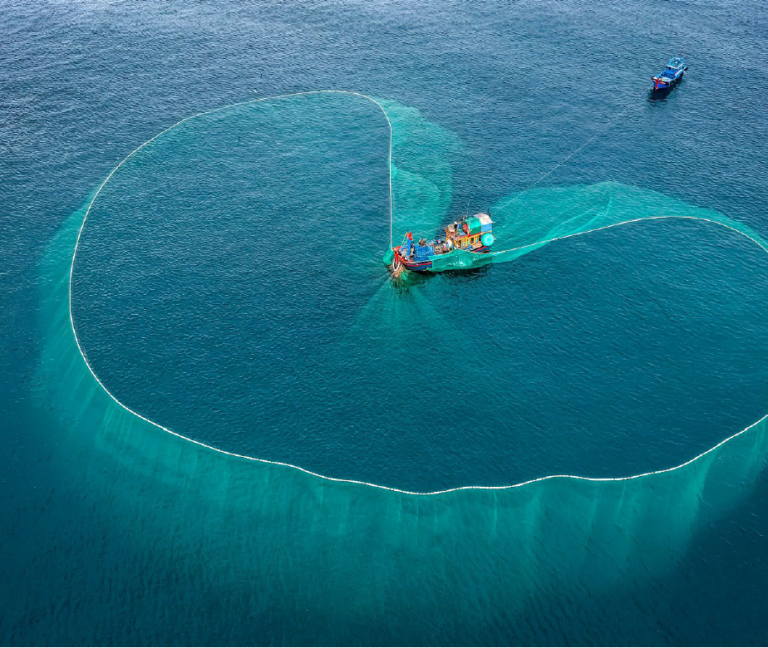The fisheries biology and ecology of the anchovy genera Stolephorus and Encrasicholina in the Indo-West Central Pacific Region
Two Indo-Pacific anchovy genera (Encrasicholina and Stolephorus) are reviewed with respect to their fisheries, contribution to food security and as important baitfish for tropical pole-and-line fisheries.

Vietnamese purse seiner midway in the process of hauling a school of stolephorid anchovies
In the Pacific Islands, the use of stolephorid anchovies has been largely limited to live bait for pole-and-line tuna fisheries. Their inclusion in official catch statistics, however, is spotty at best, and this contribution is meant to partly compensate for this, by providing catch data which will be included in the database and website of the Sea Around Us (
www.seaaroundus.org). In contrast, stolephorid anchovies form the basis of food cultures from Southeast Asia to the coast of East Africa. They are consumed in varying degrees by 30-50% of the global population, and are eaten fresh, dried and fermented into fish sauce and paste. The majority of the stolephorid anchovies landed are Encrasicholina heteroloba, E. pseudoheteroloba, E. punctifer, Stolephorus indicus, and S. commersonnii. The biology and population dynamics of stolephorids are reviewed based on studies conducted across their geographic range. The members of the two genera are short-lived (1-2 years), fast growing species with high natural mortality rates, for example, as caused by seabirds. Fishing obviously impacts stolephorid anchovy populations, but the dynamics of their populations are also strongly influenced by oceanic and climate effects. A principal driver in coastal lagoons is allochthonous freshwater input that in turn influences plankton production, especially of copepods, with stolephorid spawning tied to periods of zooplankton blooms. Another major influence is from monsoon-driven upwelling of deeper waters that fertilize the upper surface layers. The ocean or buccaneer anchovy, E. punctifer in the Western and Central Pacific Ocean can be found in all stages of life history on the high seas, where they are an important forage for a range of species such as tunas and seabirds. In this they differ from all other stolephorid anchovies, which complete their life cycles in coastal waters.
Link to this Fisheries Centre Research Report (FCRR).
Other FCRRs
Tags: anchovies, FCRR, Pacific Ocean, Publications, Sea Around Us
Posted in 2024, IOFNews, News Release | Tagged with anchovies, FCRR, Pacific Ocean, Publications, Sea Around Us
